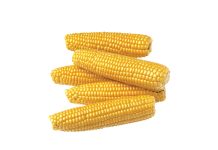
01/03/2022
Every production season holds its own risks and unforeseen events. The 2021/2022 marketing season is ending off with several unexpected events driving current market movements. Recently, commodity contract prices had some volatile reactions to international events. Graph 1 illustrates contract price reactions to global news events during the month of February.

Source: Grain SA
There are several fundamental market indicators that constantly need to be monitored to evaluate price trends, but unforeseen events can lead to sudden bullish or bearish market reactions. In the current market environment, there are several international and local factors contributing to market movements.
Conflict between Russia and Ukraine
The recent conflict between Russia and Ukraine escalated in the final days of February, having a potentially serious impact on global agriculture, and more specifically on commodity prices. In the short term, the conflict can lead to price fluctuations and increased volatility. The effect of the short-term uncertainty was shown in price reactions on 24 February, as can be seen from Graph 1. This follows a general bullish trend that started at the beginning of the month when reports of the possible conflict between the two countries arose. In the long term, the conflict may have a significant effect on the global supply of sunflower, wheat and maize.
Russia and Ukraine are both top exporters of these commodities. The supply shortage concern is supported by the fear of export interruptions. Sanctions against Russian exports have already been set by the United States (US) and allies. The sanctions include both financial and export sanctions that will severely impact the short- and long-term trading ability with Russia. These sanctions will interrupt the flow of commodities from and to Russia. The ripple effect of the current conflict does not only affect grain commodities, but also directly affects trade in other commodities such as Brent crude oil.
Effect of the Brent crude oil price
Brent crude oil prices have been steadily rising over the last couple of months. The price hikes have largely been due to global supply shortage concerns following production cuts during the COVID 19 pandemic. Since February 2022, OPEC+ has been attempting to improve global production of oil to aid in the softening of enormous price hikes. The sanctions against Russia may have dire impacts on the trading ability and flow of much needed oil reserves. The effect of the Russia/Ukraine conflict can clearly be seen from Graph 2, where the tensions between the two countries escalated in the last weeks of February. In the final week of February price hikes for both Brent crude oil and wheat contracts were realised. An elevated oil price has a wide impact – not only on commodity prices, but also on the global economy.

Increased oil prices could lead to possible increases in demand for other commodities, such as maize and soybeans, which can be used for the production of biofuels. If an increase in demand for these commodities is realised, and not met with an equal increase in supply, commodity prices could react positively. The US, together with South America, are major role-players in global maize and soybean production. The US planting season starts between April and May and market participants are anxious to evaluate the planted hectares and production conditions.
Production conditions in South America
South America is one of the largest grain producers in the world, with Brazil and Argentina the two top maize and soybean exporters globally. Production conditions in this region have a large impact on international as well as South African grain price movements. Figure 1 illustrates the current production conditions in South America. Southern Brazil and Argentina are currently experiencing very poor, dry production conditions. The drought has raised concern amongst market participants of possible global supply shortages.

Source: GEOGLAM crop monitor
The USDA’s World Agricultural Supply and Demand Estimates (WASDE) reports for January and February have lowered global maize and soybean ending stocks, with most of the decreases coming from South America. Agricultural consultancies in both Brazil and Argentina frequently change their production estimations for both countries. The general consensus in the market is that a lower yield will be realised.
Conclusion
These global events and conditions contribute to some of the indicators influencing current market movements. Sanctions against Russia will have a ripple effect on global inflation concerns, which could further spill over into commodity markets. Higher oil prices, coupled with supply concerns from South America, could lead to increased planted hectares in the US if production conditions are optimal.
Disclaimer
As far as possible, everything has been done to ensure the accuracy of this information. However, Grain SA accepts no responsibility for any damage or loss that may be suffered due to the use of this information.



















